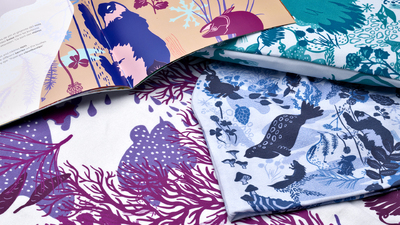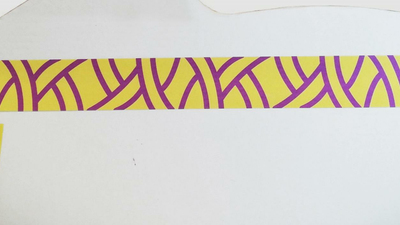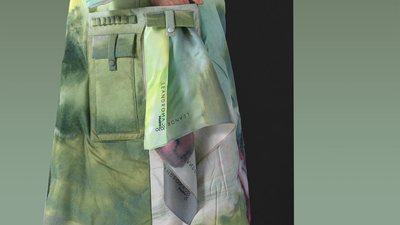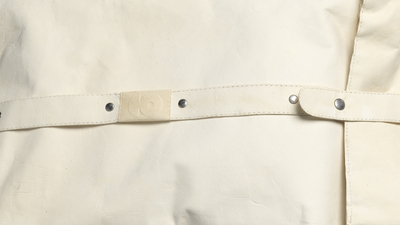Materia Bruta
The idea
Since my early childhood in Siberian steppes where Im from I’ve always had a passion for different textures, materials with stories behind that make me dream and put on a road for mind-travelling. As I’m a fashion designer I like to play with contrasts of the material and the garment that is not always conventional, but sometimes challenging and communicating with the viewer in a silent way. In early 2017 when I recently moved to France from China I run into a project of Yurii Kasao «100% Jellyfish Leather» (https://www.yuriikasao.com/#/100-jellyfish-leather/). I was without a workshop, without my suppliers and often going to a nearby beach - a natural reserve- suffering from jellyfish blooms. Then it exploded my mind as finally I found what I was looking for: an inspiration to dig into our new life daily material and living matter. I realised this is what we always did, gathering elements of nature around, pieces of our lifestyles, and dress ourselves with shades of our livelihoods. I then jumped onboard an exploration all kind of new and old biomaterials, all of which have stories to share, and tales yet to write not always good ones though, but about our life and reality. From this moment I wished to work with bio/innovative and experimental materials as part of my attempts to help design neotraditions.
The birth of the project
In our modern world that has big environmental issues, everybody has their own part to play. Especially the fashion industry is the second most polluting industry, which weights heavily on the shoulders of all sustainable players as I commit to be part of.
The challenge to act responsively and at peace with ourselves and generation to come is two sided: physically to get to a bearable footprint on our environment, and culturally to reconnect to ourselves and communities in a fast-changing and globalised world.
And here is where the project meets both ends. It focuses on biomaterials as rooting mechanisms to the critters around us, anchors us in our cultures and identity by drawing on traditional patterns and finally relies on the intrinsic sustainability of bio-based materials.
The challenge of my project is to be able to produce and put in the market ready products made from alien biomaterials that are still only exposed in exhibitions, but don’t make it to be worn by people and tell their stories and inspire others to think about environment that we all share.
When the idea of the project emerged, I was still lacking effective capacity and infrastructure to make it real. To explore and get closer to material makers that would unlock new possibilities for me I started to explore cooperation.
Later on in 2018 with Benjamin Denjean (ecosystem designer and biophysicist) and a team of medialab thr34d5 we won the ReShape 2018 competition on Wearable Technology category with a ReGrow project presenting Kombucha jacket. The concept was written around opening up material making process while trying to achieve professional level functions (healthcare). At this event I met Anastasia Pistofidou who is the Fab Textiles and Fabricademy Director who worked extensively of open-source biomaterials. It became clear that our passion was similar and our skills complementary. We then decided to apply for WORTH partnership project and work on the inspiring collection of garments.
Collection MATERIA BRUTA is the first step full of hope and persistency to make wearable garments using diverse biomaterials.
The creative process
During creation process I often start from getting inspired by the material, by its touch, texture, color, smell and the feeling that what gives the image in my head of the final garment, so it was important for me to get the samples first. When we started the work with my partner I didnt have yet the design but had the mood and colors I want to work with. I was waiting for the first samples to work on the sketches.
The material production process was pretty challenging as all of the materials are still on the experimenting, developing and testing stage. Therefore, with limited time, budget and staff, it is a leap of faith: you make a bet based on the best chance to get a wearable and good material, and from there the trial and error starts. And here comes the real challenges, natural process don't need much: barely heating, no machinery, but they need the most precious resource for us human critters: time for the magic to happen.
We had some difficulties with waterproofness, strength, staining, sun and light resistance which were improved, but are still issues hindering the market readiness of the material. Therefore, Material Bruta will not be a collection you can find in normal shops (of course if unique pieces interest you they are available).
The collaboration
Being an independent designer and maker, I well experienced how hard it can be working alone and taking care of everything starting from idea, design, search for right materials, etc. and ending with taking care of sales. Thanks to the WORTH partnership project I had a great opportunity and fun to work with IAAC Fab textiles and explore, develop and concentrate only on biomaterials for my collection Materia Bruta that is part of my newly being born brand TRADITIONAL FUTURES. Often when you work alone you miss knowledge on specific areas, interaction, and exchange and often your ideas can end just as an idea when you work alone.
Also overtaking complex process rapidly requires tremendous amount of work, alone this can lead to unmanageable length of time, especially for pre-commercial and exploratory projects. By working between specialised teams, it ensures fast delivery and identification of loopholes and obstacles to be tackled.
The future
In the future I see myself continuing working with various ready-for-the-market biomaterials and with handmade artistic biomaterials for limited collection and unique pieces and selling on my webshop and in concept stores around the world. For that I need to find industry-made biomaterials that are compatible with garments or support of industries to improve the existing materials. However, I don’t think that as a designer I would be at my right place as pushing for material improvement. For this investment need to be channeled directly to pre-industrial and industrial material makers so that they become available for creative and entrepreneurial people like me. What I need is the contact with those producers and funding to test commercial prototyping.
What I found is that getting into this innovation you need a strong a cohesive team, and I would be happy to join one to make something bigger that what I can do alone.
The message
There's an old African proverb that says “If you want to go quickly, go alone. If you want to go far, go together."
























































































